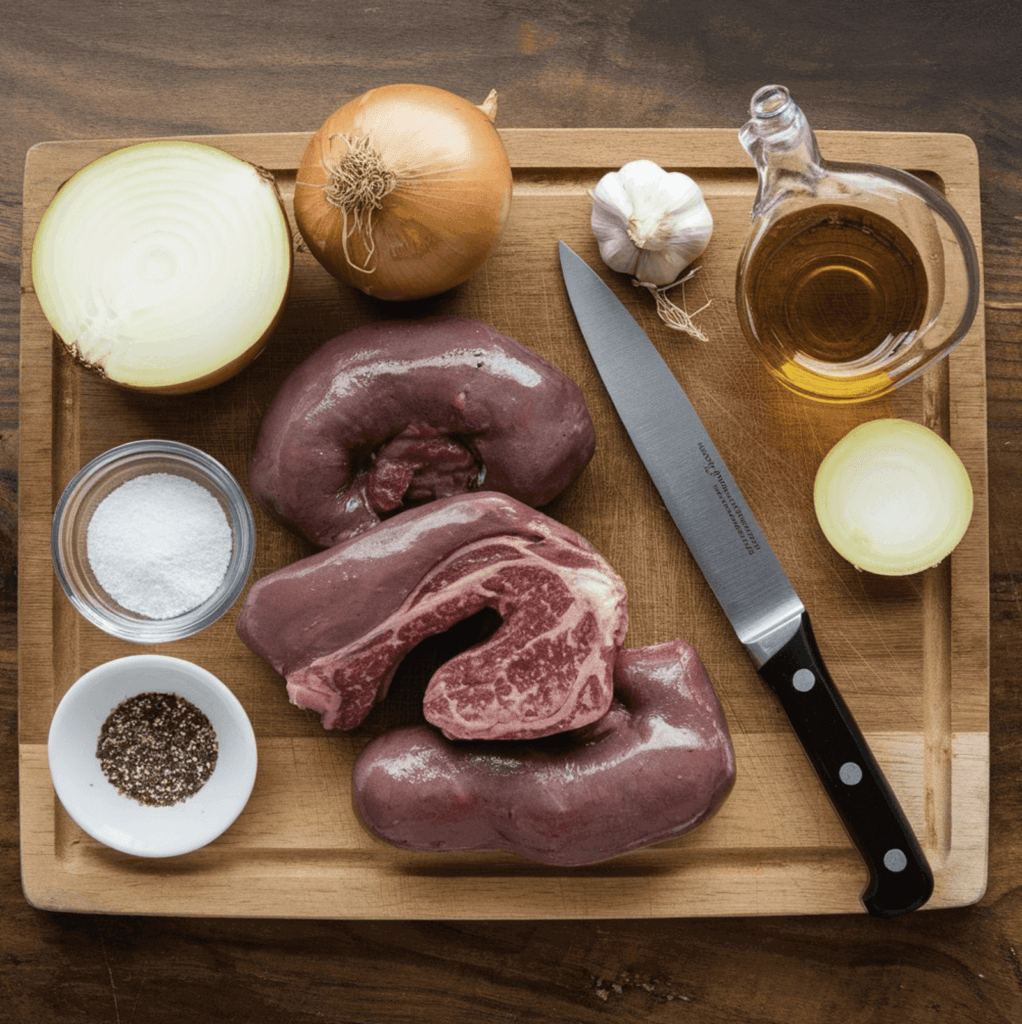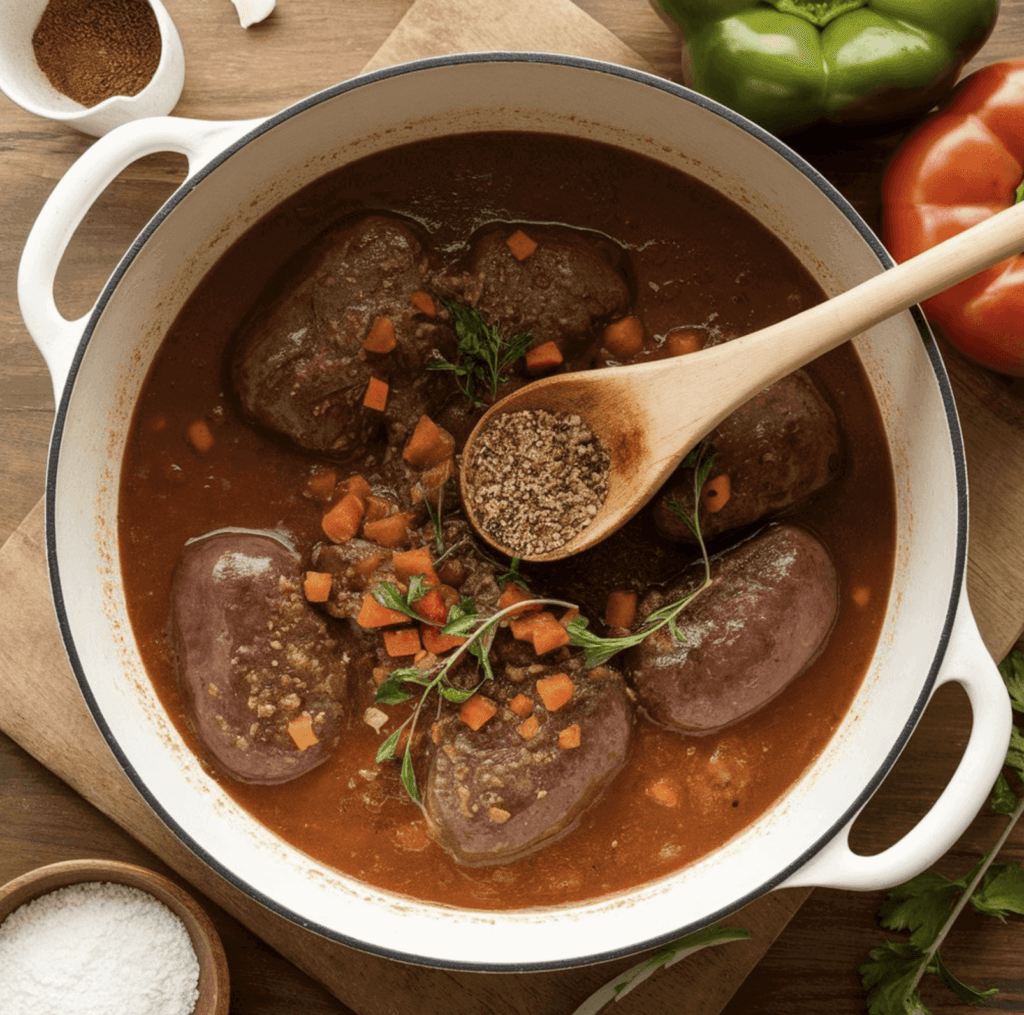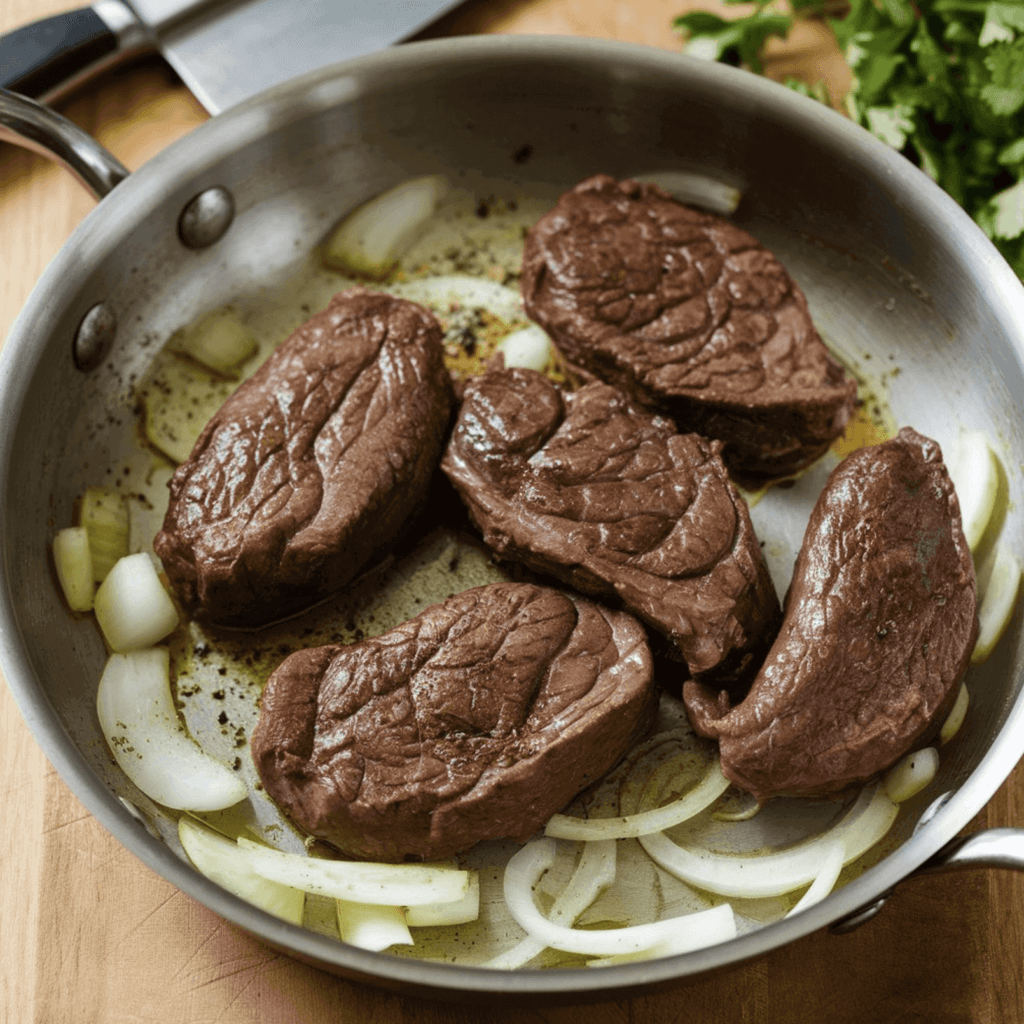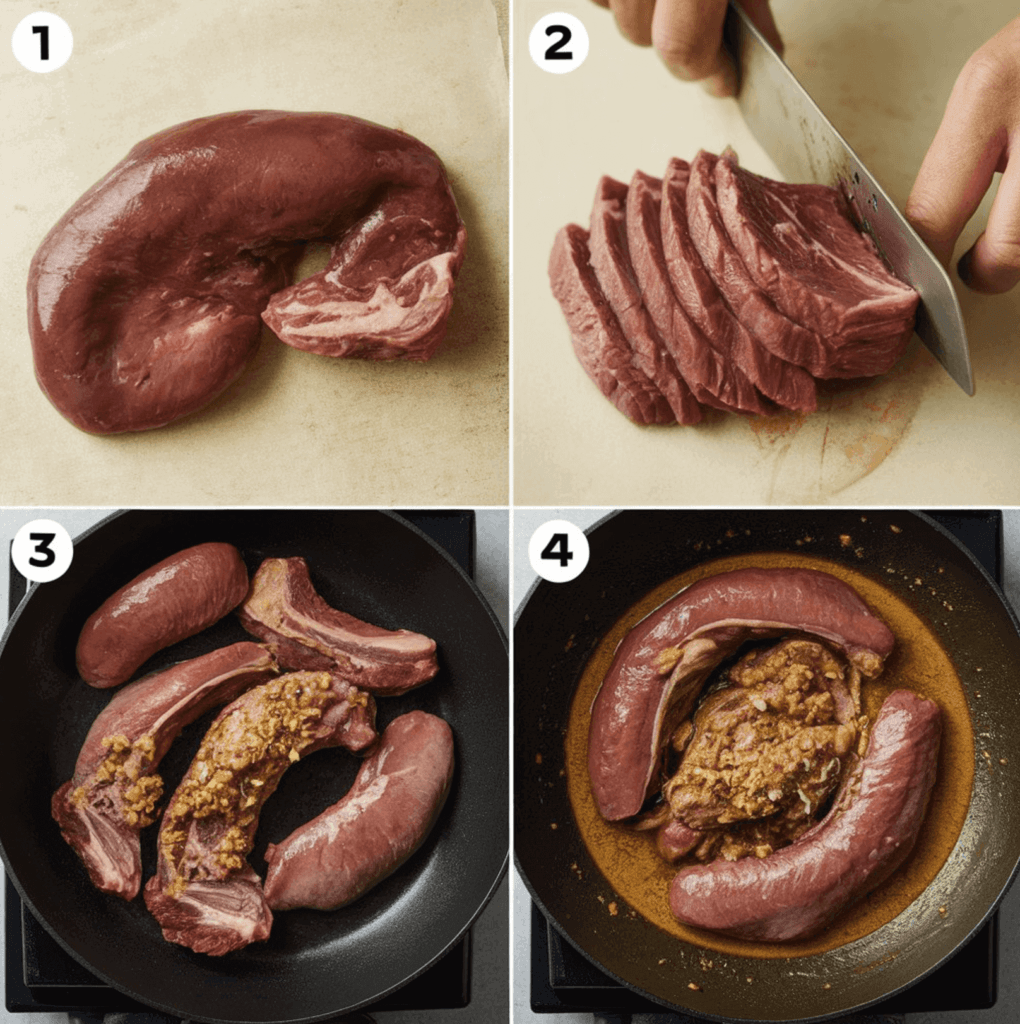When it comes to crafting a satisfying and unique dish, a beef kidney recipe is undoubtedly a hidden gem in the culinary world. Above all, it combines rich, bold flavors, impressive nutritional benefits, and incredible versatility, making it a dish worth mastering. For adventurous cooks or those simply looking to elevate their cooking repertoire, beef kidney offers a rewarding challenge. Not only that, but it also provides an exciting opportunity to expand your palate and experiment with ingredients that are often underappreciated.
Beef kidneys are a staple in various cuisines worldwide, celebrated for their ability to take on diverse flavors and cooking methods. For instance, whether they’re simmered in rich sauces, baked into comforting pies, or grilled to smoky perfection, kidneys adapt beautifully to many styles of preparation. In addition, they are packed with protein, iron, and essential vitamins, making them as nutritious as they are delicious.
This guide will walk you through everything you need to know, from choosing and preparing the perfect beef kidneys to creating flavorful dishes that even skeptics will adore. Moreover, with tips for reducing the kidneys’ strong flavor and enhancing their texture, you’ll be able to craft a dish that’s truly special.
If you’re a fan of hearty meals that bring warmth and comfort, you might also enjoy exploring other classic recipes. For example, take a look at our guide to the Cracker Barrel Meatloaf Recipe for another comforting, flavor-packed dish that’s perfect for family dinners or special occasions.
So, get ready to discover the full potential of beef kidney and unlock a new world of culinary possibilities. With the right preparation and a touch of creativity, you’ll transform this humble ingredient into a centerpiece worthy of any table.
What Makes a Beef Kidney Recipe Special?
Beef kidney is a surprisingly versatile ingredient, offering a unique flavor and a host of health benefits. In fact, it is a key component in many traditional dishes worldwide, cherished for its ability to absorb and enhance bold seasonings. For instance, in British cuisine, beef kidney takes center stage in the comforting steak and kidney pie, where it melds beautifully with tender beef and a rich gravy encased in a flaky crust. On the other hand, Asian cuisines often feature stir-fried kidney in vibrant, spicy sauces, delivering a punch of flavor in every bite.
Why Choose Beef Kidney?
Nutritional Powerhouse: Beyond its flavor, beef kidney is rich in high-quality protein, which supports muscle repair and overall energy. Moreover, it contains iron and vitamin B12, essential for combating fatigue and maintaining healthy blood cells. Additionally, beef kidney is an excellent source of selenium, an antioxidant that plays a critical role in boosting immune health and reducing inflammation.
Affordability: Compared to prime cuts of beef, kidneys are remarkably budget-friendly. This makes them a fantastic choice for anyone seeking to create gourmet-style meals without overspending.
Sustainability: Including organ meats like kidney in your diet promotes sustainability by reducing food waste and ensuring every part of the animal is utilized.
Above all, beef kidney is a delicious, economical, and eco-conscious option for any meal. Its ability to combine bold flavors with essential nutrients makes it a culinary gem worth exploring.
If you’re a fan of hearty meals, you might also enjoy our Salisbury Steak Recipe, which pairs rich, savory flavors with a protein-packed punch. So, whether you’re exploring new dishes or revisiting an old favorite, beef kidney is a satisfying and nutritious choice.
How to Prepare Beef Kidney for Cooking

To achieve a flawless beef kidney recipe, preparation is the most crucial step. Because of this, you’ll want to follow a few essential techniques to ensure your dish boasts the best taste and texture. Proper preparation removes any unwanted flavors and guarantees a tender, delicious result.
Step 1: Choosing the Right Kidneys
First and foremost, selecting high-quality kidneys is essential. Look for fresh kidneys with a firm, smooth texture and a mild, clean smell. In contrast, avoid any that have a strong, unpleasant odor or appear slimy, as these may indicate spoilage. Ideally, purchase your kidneys from a trusted butcher or specialty market to ensure the highest quality.
Step 2: Cleaning the Kidneys
Next, rinse the kidneys thoroughly under cold running water to remove any surface impurities. After that, slice them lengthwise to expose the interior membranes and the pockets of white fat. Carefully trim away these parts with a sharp knife, as they can contribute to an overpowering, gamey flavor if left intact. Not only does this step improve the overall taste, but it also enhances the texture of the final dish.
Step 3: Soaking the Kidneys
For instance, to mellow out the strong flavor, soak the kidneys in cold milk, water, or a diluted vinegar solution for 30 minutes to an hour. This process works to neutralize any residual bitterness and helps tenderize the meat. Additionally, soaking is especially useful if you’re preparing kidneys for those who are new to eating organ meats.
In short, proper cleaning, trimming, and soaking are essential steps to creating a dish that is enjoyable for all palates. With a little effort and care, you can transform beef kidney into a culinary highlight.
If you’re looking for other comforting recipes, don’t miss our Lasagna Soup Recipe, perfect for cozy evenings and hearty appetites.
Step-by-Step Beef Recipe
Transforming beef kidneys into a delicious and satisfying dish is easier than you might think. By following this step-by-step guide, you’ll create a flavorful meal that’s both comforting and nutrient-packed. The key lies in proper preparation, balanced seasonings, and a thoughtful cooking process.
Ingredients
- 2 beef kidneys, cleaned and trimmed
- 2 tablespoons olive oil or butter
- 1 large onion, finely chopped
- 3 garlic cloves, minced
- 1 cup beef stock
- 1 tablespoon tomato paste
- 1 teaspoon smoked paprika
- Salt and pepper to taste
- Fresh parsley for garnish
Instructions
Preparing and cooking beef kidney is straightforward when you break it into manageable steps. Each stage adds to the overall flavor and texture, ensuring a delightful final dish.
Step 1: Preparing the Kidneys
Proper preparation is the foundation of a successful beef kidney recipe. After soaking the kidneys to remove bitterness and soften their texture, pat them dry using a paper towel. This ensures no excess moisture interferes with the searing process. Next, slice the kidneys into uniform, bite-sized pieces. Cutting them evenly guarantees consistent cooking and makes the dish easier to serve and enjoy.
Step 2: Searing for Flavor
Searing is a critical step that enhances the kidneys’ natural flavor. Heat olive oil or butter in a large skillet over medium heat until it’s hot but not smoking. Add the kidney pieces in batches, if necessary, to avoid overcrowding. Sear them until they are lightly browned on all sides, which helps lock in their juices and creates a savory foundation for the dish. However, take care not to overcook at this stage, as kidneys can quickly become tough. Once browned, remove the kidneys from the skillet and set them aside.
Step 3: Sautéing Aromatics
Flavor layering begins here. In the same skillet, add a little more oil or butter if needed. Sauté the chopped onions and minced garlic over medium heat until they are softened and fragrant, usually about 2–3 minutes. For example, caramelizing the onions brings out their natural sweetness, while garlic adds a warm, aromatic base to the dish.
Step 4: Deglazing and Simmering
Deglazing is the process of incorporating all the flavorful browned bits stuck to the pan into the sauce. Add tomato paste to the skillet and stir for 1–2 minutes to blend it with the onions and garlic. Pour in the beef stock, scraping the bottom of the skillet with a wooden spoon or spatula. Consequently, this step creates a rich, robust sauce that forms the backbone of the dish. Bring the mixture to a gentle simmer to meld the flavors.
Step 5: Combining and Cooking
With the sauce simmering, return the seared kidneys to the skillet. Stir them gently into the sauce, ensuring all pieces are coated. Simmer the mixture for 10–12 minutes, stirring occasionally. This allows the kidneys to absorb the flavors of the sauce while becoming tender and flavorful. Check periodically to prevent overcooking, which could make the kidneys rubbery.
Step 6: Garnishing and Serving
The finishing touches elevate the presentation and flavor. Remove the skillet from heat and garnish the dish with freshly chopped parsley for a vibrant pop of color and an herbal finish. Serve the dish hot with your choice of sides, such as mashed potatoes, rice, or crusty bread to soak up the savory sauce. In addition, roasted vegetables or a crisp green salad provide a well-rounded accompaniment that balances the richness of the kidneys.
FAQs About Beef Kidney Recipe
Cooking beef kidney can feel intimidating at first, but with proper preparation and technique, it becomes an enjoyable culinary adventure. Here’s everything you need to know, broken into digestible sections for clarity and ease of reading.
How to Cook Beef Kidney Recipe?
Cooking beef kidney starts with careful cleaning and soaking to remove any strong or undesirable flavors. After this essential preparation, sear the kidneys in a skillet over medium heat. This step helps lock in juices and develop a deep, savory base flavor. To finish, simmer the seared kidneys with stock, aromatic ingredients, and seasonings until tender. The result is a richly flavored dish perfect for any table.
Why Trim the Fat from Beef Recipes?
Trimming the fat is critical because it often contains a strong, gamey taste that can overpower the overall dish. Removing this fat results in a cleaner, milder flavor that is more appealing to most palates. Additionally, it improves the texture, making the kidneys tender and enjoyable. By actively trimming and cleaning the kidneys, you ensure they are ready to be transformed into a delicious meal.
How to Prepare Cow’s Kidneys?
To prepare cow’s kidneys, rinse them thoroughly under cold running water to remove impurities. Next, trim away the white membranes and any visible fat to improve both the flavor and texture. For a milder taste, soak the kidneys in milk, water, or vinegar for 30–60 minutes. This process neutralizes bitterness and ensures the kidneys are ready for cooking.
How Do You Use Beef Kidney Fat?
Beef kidney fat, or suet, is incredibly versatile and prized for its use in traditional cooking. Render it into tallow by slowly melting it down; the resulting product can be used for frying or roasting vegetables, baking, and even making flaky pie crusts. Many classic recipes, such as steamed puddings, rely on suet for their unique texture and richness.
What Temperature is Beef Kidney Cooked To?
To ensure both safety and optimal flavor, cook beef kidneys to an internal temperature of 160°F (70°C). Use a meat thermometer for accuracy to avoid undercooking or overcooking. Cooking beyond this temperature may result in a rubbery texture, so watch the temperature closely for best results.
Can You Dehydrate Beef Kidney?
Yes, beef kidney can be dehydrated for various uses. Dehydration creates a shelf-stable product that is both lightweight and nutrient-rich. These dehydrated kidneys are ideal as snacks for outdoor adventures or as a protein-packed treat for pets. Active drying methods, such as using a food dehydrator, ensure the kidneys retain their nutrients and flavor.
Can You Eat the Whole Beef ?
In short, the entire kidney is edible, but trimming is highly recommended to enhance its taste and texture. Removing the membranes and fat ensures a more pleasant flavor profile, while soaking further reduces bitterness. With these preparations, you can enjoy the kidney’s unique taste in its entirety.
How Do You Refine Your Kidneys?
Refining beef kidneys involves actively preparing them for cooking by removing the tough fat and membranes, soaking them to balance the flavor, and pairing them with complementary seasonings. These steps transform the kidneys into a tender and flavorful ingredient that can shine in a wide variety of recipes.
Conclusion

In conclusion, mastering a beef kidney recipe opens the door to a world of culinary possibilities. Not only is this dish packed with nutrients like protein, iron, and B12, but it also offers a distinctive flavor that stands out from more common cuts of meat. By following the preparation and cooking steps outlined here, you can confidently create a dish that is both satisfying and impressive.
Above all, don’t be afraid to experiment with seasonings, sauces, and accompaniments to truly make this recipe your own. Whether you’re serving it as a hearty main course or incorporating it into a multi-dish spread, beef kidney is a versatile ingredient that can shine in countless ways.
For more detailed insights and inspiration, explore these trusted resources to refine your skills further:
So, gather your ingredients, follow the steps, and savor the rich flavors of this remarkable dish. With a little practice and creativity, you’ll turn this underrated cut into a masterpiece worthy of any table.




